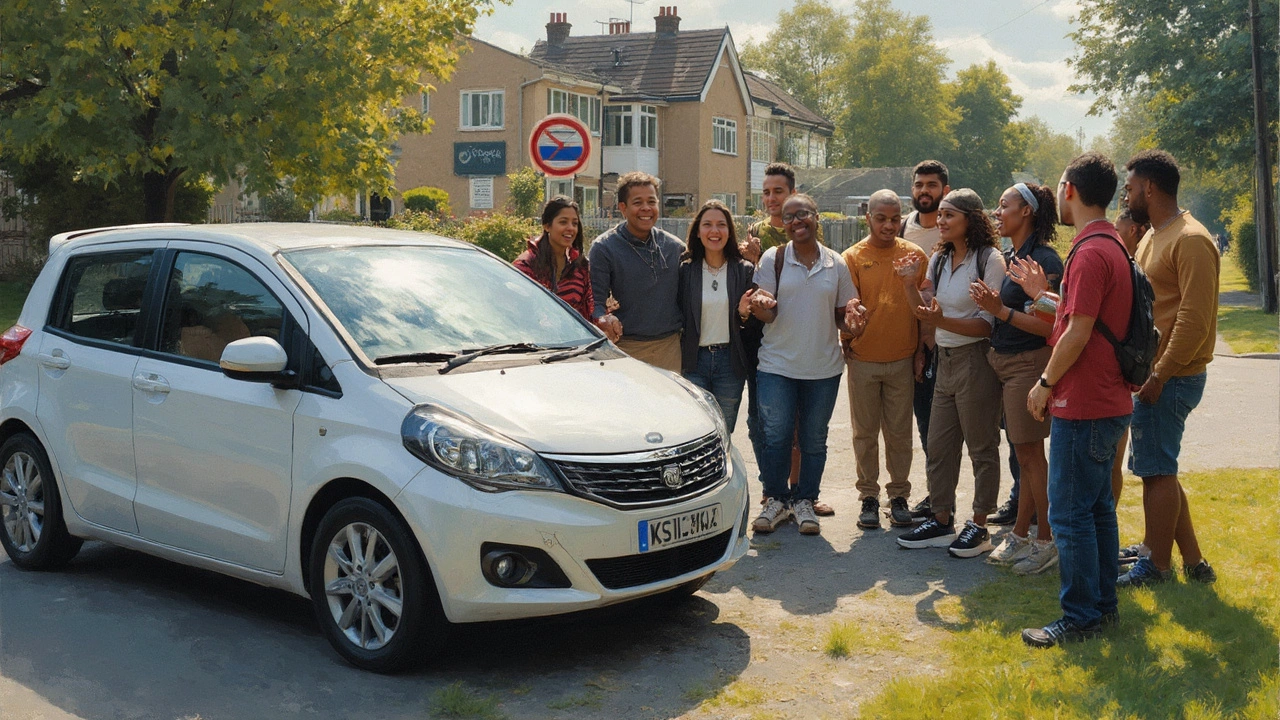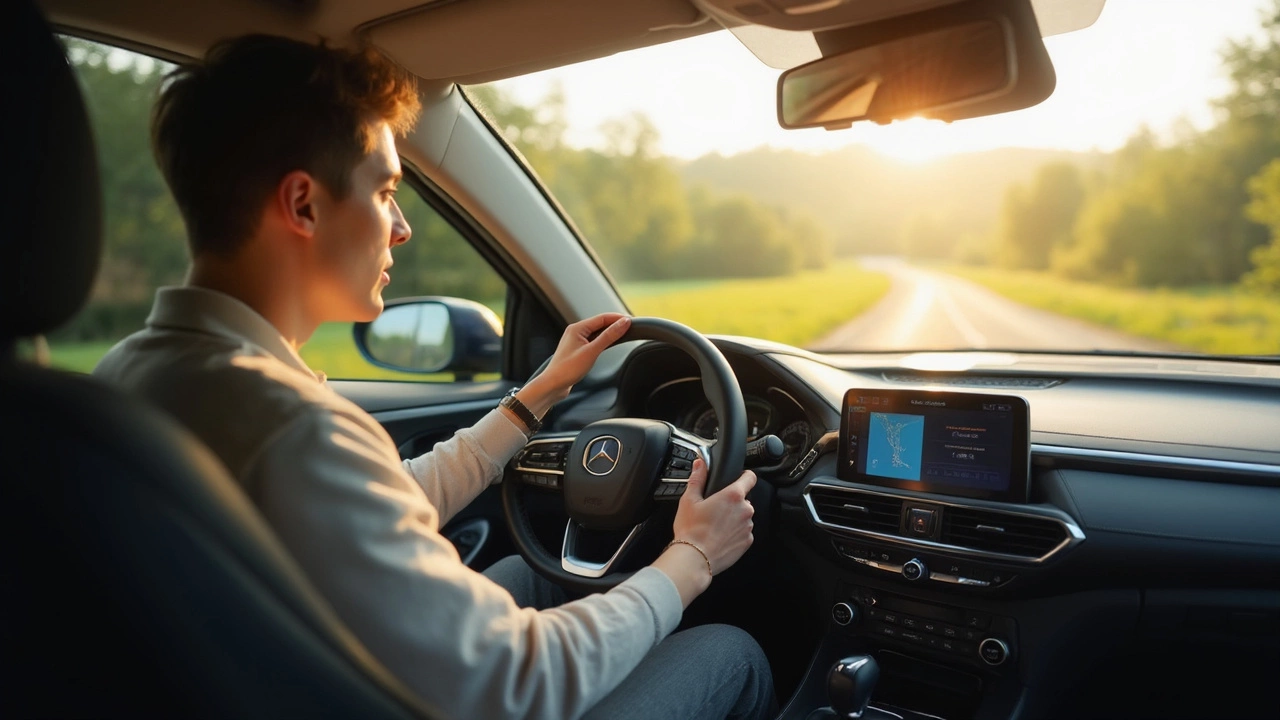So, you're ready to tackle driving an automatic? That's awesome! First thing's first: automatic cars are simpler to drive than their manual counterparts since you won't have to juggle a clutch. You just need to get a feel for the basic controls, and you're set.
Let's kick things off with the gears. In an automatic car, you'll mostly toggle between Park (P), Reverse (R), Neutral (N), and Drive (D). Sure, some models have 'L' for low gear, but don’t sweat it for now. It's all about knowing how to switch between these to get moving or to stop.
- Understanding Automatic Gears
- Getting Comfortable Behind the Wheel
- Practical Tips for New Drivers
- Building Confidence and Road Awareness
Understanding Automatic Gears
Alright, let's decode those gear letters on your gear shift. It's so much simpler than it looks, promise! In a automatic driving scenario, these are the essentials you'll work with:
- P (Park): Use this when you're stopped and want to turn off your car. It locks the transmission, so your car won't accidentally roll away.
- R (Reverse): Need to back out of a driveway? This gear is your go-to. Just remember, always stop completely before switching to Reverse.
- N (Neutral): You won't use this much. It's mainly for scenarios like towing or rolling in a car wash. Think of it as a safety buffer, disconnecting the wheels from the engine.
- D (Drive): This is your main buddy. Once you're ready to go, shift here, hit the gas, and you're moving!
But there's more! Some cars have extra settings, like:
- L (Low): Handy when you're driving down a steep hill, as it uses engine braking to give you more control.
- Numbers like 1, 2, or 3. These settings limit how high the gears go. Useful for conditions like towing or driving uphill.
Why all these options? They help you get the most out of your car, whether you're cruising the highway or navigating tricky roads. And here's a handy tip—never shift gears while your foot's on the gas. This can damage the transmission.
Just like anything new, getting familiar with these settings takes a bit of practice. But once you do, beginner driving becomes a breeze, and before you know it, you'll be driving with confidence!
Getting Comfortable Behind the Wheel
Alright, so you've got the basics of the gears down. Next up is actually sitting in the driver’s seat and making it your own. Adjusting your seat position is vital. You'll want to make sure your knees are slightly bent when they press the pedals, and your feet should comfortably reach both the brake and the gas.
Don't forget about the mirrors. They might seem like small details, but a proper view is crucial. Adjust your rearview and side mirrors so you can see as much as possible. This stuff should become second nature, especially when you're learning automatic driving and focusing on road awareness.
Consider the feel of the steering wheel, too. Your hands should sit comfortably at around 9 and 3 o'clock, like an old-school clock. This grip not only gives you better control but also keeps you prepared for those sudden moves you might need to make.
Before you hit the road, spend a few minutes familiarizing yourself with the dashboard controls. Know where the headlights, wipers, and hazard lights are. Being prepared with these is just as important as knowing when to use the blinker.
- Check seat and steering wheel adjustments.
- Ensure all mirrors give a clear view.
- Familiarize yourself with the dashboard controls.
When you're set, practice with the engine off—shift through the gears just to see how it feels. This builds muscle memory and makes you more aware of your driving lessons. Knowing your ride is more about hands-on experience than just tech know-how.

Practical Tips for New Drivers
Getting started with driving an automatic car can be super exciting but slightly nerve-wracking, especially when you're new to it. To help you out, here's a breakdown of practical tips to make the experience as smooth as possible.
First, always get familiar with the car's features before hitting the road. Sit in the driver's seat and take a few minutes to adjust things like the seat height, mirrors, and steering wheel. Make sure you're comfortable—that way, you can focus on the drive itself.
- Pre-Drive Routine: Before you start, always make sure your seatbelt is on and check that all doors are closed securely. This ensures safety right from the beginning.
- Footwork Basics: Keep in mind that your left foot is pretty much useless in an automatic; everything you need to do with pedals is handled by your right foot. You've got the brake and the accelerator—nothing more!
- Starting the Car: With automatics, you'll need to have your foot on the brake to start the car and to change gears. Remembering this little habit will save you some frustration when you're eager to go.
Another major tip is to practice smooth acceleration and braking. Jerky movements are a common tell that you're a newbie. Start by applying gentle pressure on the brake and accelerator to get a hang of how the car responds.
If you're feeling a bit anxious about the speed, stick to low-speed zones or empty parking lots for practice runs. This gives you a safe space to build up confidence.
Growing comfortable with an automatic often means not being afraid to ask for help. Whether it's from a friend or a professional driving lesson, a little guidance can make all the difference.
Finally, try to drive regularly. Like any skill, driving improves with practice, and consistent practice will get you more comfortable in no time.
Building Confidence and Road Awareness
Getting comfortable with automatic driving is like mastering a new sport—practice makes perfect. Let's dive into ways to boost your confidence behind the wheel and grow your road awareness like a pro.
First, practice is your best friend. Start in low-traffic areas to get a feel for the car, especially if you’re a newbie. Drive around empty parking lots or quiet streets to test out things like braking and accelerating.
A great tip is to familiarize yourself with the rules of the road. Knowing right-of-way laws, speed limits, and parking regulations can give you an upper hand in real-world situations. Double-check traffic signals and signs while driving; they’re there to help!
Consider enrolling in a driving course specifically for automatic transmission vehicles. These courses usually focus on city and highway driving skills and help in understanding car handling better. Plus, you'll get feedback from a professional, which is pretty handy.
A neat little trick is to always keep your focus on the road ahead, not just on the car in front of you. Paying attention to what’s happening three or four cars up allows you to anticipate stops and speed changes.
Regularly swap seats with more experienced drivers if you can. This backseat view gives you a fresh perspective on road etiquette, like how to maintain safe distances.
If numbers motivate you, here’s an interesting stat: Most accidents happen during lane changes or turns. So, always signal your intentions and check your mirrors and blind spots diligently.
Lastly, keep calm. Mistakes will happen, and that's part of learning. Don't let them shake your confidence—just learn from them and move on. Remember, every pro driver was once a beginner like you.

